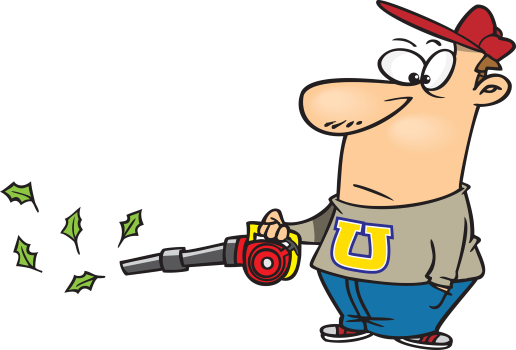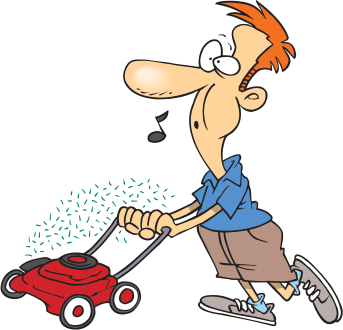How to Pick Up Acorns from Your Lawn
One of the most tedious tasks that needs to be done is picking up acorns from your lawn. Oak trees are great, but the huge amount of acorns in your yard looks messy and untidy. Unfortunately, the news gets worse. If you want a nice, healthy lawn, you need to remove the acorns.
What happens when acorns accumulate on your lawn?
When you get a blanket of acorns on the ground, it will damage the lawn underneath. Not only does it smother the lawn, it also blocks off the sunlight and stops the grass from reviving nutrients. If you don’t pick up the acorns, you run the risk of getting dead and unhealthy patches on your lawn.
If you leave them as they are, you also run the risk of setting out a welcome mat for pests such as squirrels, chipmunks, and other rodents. These little fellows can also do further damage to the lawn.
Why do you need to remove acorns regularly?
To keep your lawn healthy and green, you need to regularly remove the acorns from your yard. It is one of these jobs where it is much better to do it often in small amounts rather than leave it until you have a massive task ahead of you.
In my lawn care business, I am very dependent on good systems to get jobs done quickly and efficiently, and acorns are no different. In this article, we are going to talk about the best way to pick up fallen acorns in your yard.

Tools and equipment are needed.
Like any job, when it comes to cleaning up the acorns, you need to have the right tools in your arsenal. These are my go-to tools whenever I do a job like this.
Rake: This is the most accessible tool to remove acorns from your lawn. Do make sure that you use a stiff-tined rake, as I have found that a lot of the cheaper thin-pronged rakes are not up to this task.
A large bucket or bag: You will need a heavy-duty bag to transport your acorns. Again, don’t get anything too lightweight. Acorns can be heavy, especially if they are damp.
Gloves: You will need good gloves as sometimes acorns can have shaped edges, and they have on occasion been known to cause skin irritations.
Shovel: This will help with the clean-up.
Now that you have the tools you need on hand, We will look at the best way to pick up acorns.
Tips for picking up acorns
Regularly monitor your lawn for acorn accumulation.
Patrolling your yard regularly and putting aside some time to clear the acorns from your yard is the best plan of action. You don’t want to end up doing some monastic task that will take you all day. My philosophy is that you tackle these tasks the same way that you would eat an elephant, a bit at a time.
These are two good reasons why earlier is better.
- Acorns are easier to rake when they are fresh and on top of the grass, rather than later when leaves may cover them or rain presses them into the soil.
- Removing them from your lawn soon after the acorns fall prevents oak trees from reseeding. Overwintering acorns increases their chances of sprouting in the spring.
At our place, we have a very old house on a full section of hedges and trees. I get out there for a few hours each weekend, and I keep on top of everything. If I decided to tackle it once a month, I would never have the energy to head out to do the job.
Lawnmowing101 Membership

Build a six-figure lawn care business
Lawn Care Software

Get Your Lawn Care Business Running Smoothly
Easier for you and your customers. Jobber helps you quote, schedule, invoice, and get paid—all in one place.
Choose the right time to collect acorns.
A windy day is one of the best times to clear acorns from the yard. You want to start regularly picking them up as soon as possible after they start falling. You don’t want them to get buried and start to decompose.
Now let’s look at the different methods you could use to get this job done.
Using a rake.
Using a stiff-tined rake to rake up the acorns into piles before gathering them is the most effective way to gather acorns. Rake the acorns in a circular motion, and rake the acorns into piles. A stiff rake with close-set, robust tines is preferable to a flexible leaf rake when picking up acorns since it can be difficult to get between the tines of a rake.
Push downwards on the rake with a reasonable amount of force to get under the acorns. Rake them towards concrete areas if possible for easier management of disposal.
Using a blower
Another way is to use a blower to clean up acorns from the lawn. If you decide to use a blower, you will need a machine with at least 200 mph in airspeed. This will rule out plug-in electric blowers, but you may be able to find some newer battery-powered machines that can do this.
Keep your blower close to the ground, and work on blowing the acorns into piles. If you can blow them onto a concrete area, it will make things easier. Some machines may have a customer nozzle attachment that will force out more air.

Vacuuming up the acorns
If you are fortunate enough to have a leaf vacuum, then this is the best way to approach this job.
First, make sure that you use a heavy-duty shop vacuum with a large bag to avoid having to empty the bag all the time. Do not attach any attachment to the end of the hose, and make sure that the opening is 2–3 inches across. Set the machine to high suction.
Go back and forth over the areas where the acorns are most concentrated with your yard vacuum. Hold the hose close to the ground, focusing on actual acorns rather than trying to generally vacuum areas.
Empty your bag often, and clean around the hose opening regularly.
A push or riding lawn mower
If you are going to use a lawn mower to clean up acorns, there are some things that you should keep in mind.
Cut High: Always set the mower on a higher setting at around 3–4 inches. If you have the blade too low, it runs the risk of clogging up the lawnmower. You will need a good amount of airflow to do a decent job.
A dry cut is best. Make sure that the acorns are dry. If they have too much moisture, they will turn into a paste inside the deck. You are going to have to clean under the deck frequently anyway, but you will be doing this a lot less if the acorns are dry.
Run over the area more than once. This will break it into smaller pieces and give it a much better finish. This is unusual; I do this with overgrown lawns all the time.
If you hear your engine straining, then you have a few options.
- Go slower. Usually, it’s not that the engine cannot handle the job. It’s just that you’re going too fast with the lawn mower.
- Raise the cutting height more. The higher you raise the mower, the easier it will be on the engine. You could even do the first cut high and then recut it a few times, going lower each time.
- If your mower is still struggling, it is time to stop. Your engine may be too small; try another method. The acorns can damage your engine if you continue.
Mulch or catch?
You can do either. If you mulch acorns, you don’t have to dispose of them, as they will decompose quickly. The downside is that you will need to mow it more than once, and it will not be as tidy as a bagged mow. On the bright side, you will also be feeding your lawn.
Bagging works well too, plus you will not have to manually pick up the acorns. I would recommend that you start high and work on getting good airflow into the bag before going lower with the blades.

Acorn Picker Upper Roller
The Acorn Picker Upper Roller is a great little hand tool that’s available on Amazon. It works like a lawn sweeper and is perfect for the job. Full disclosure: I haven’t used it myself, as I have commercial mowers that can do the job.
What you do is roll it slowly over the acorns that have fallen. The roller bristles will suck up the acorns. You don’t want to push downward too hard; let the momentum do the work.
Go in different directions, back and forth, side to side, etc. The tool needs to catch the acorns at the right angle, and changing directions will achieve that. Do the areas with the largest amounts of acorns first.
Tap the tool occasionally to dislodge any acorns that are stuck, and avoid sticks and twigs if you can. Make sure that you empty the hopper regularly.
Now go around and pick up the acorns you have missed.
Perfect.
Proper disposal of the collected acorns
These are some ways you can dispose of acorns that you have collected.
Compost Bin: You can put them in your compost bin; however, it is better not to just pile them in. Try to chop or crush them first to speed up decomposition. Also, try to mix them with other things, such as leaves, grass clippings, and food scraps.
Use them as mulch. This is a great eco-friendly way to dispose of acorns. Use layers of crushed or chopped acorns around your trees and gardens. This will make a great natural mulch that will reduce weeds, retain moisture, and feed the plants as they decompose.
Scatter in wooded areas: If you are lucky enough to border a forested area, you could scatter them in the woods. Wild animals like deer, turkeys, and squirrels all love acorns.

Put them out for collection. You can use an organic collection service if you have one available or a rubbish removal service if your local municipal waste department accepts acorns.
If you want to go really green wikihow.com has an article on how to prepare acorns as food or visit LJworld for their list of things you can do with acorns.
Summing up: How to Pick Up Acorns from Your Lawn
Key Takeaways
When you put off acorn removal, your lawn gets messy and unsightly. It can also damage the lawn underneath and attract pests. To keep your lawn tidy, you will need to clean up the acorns regularly. You can use tools like a rake, blower, shovel, or lawnmower. The best time to pick up the acorns is before they build up and when they are dry. You can compost, mulch, or use a trash removal service to dispose of the acorns.
Listen to audiobooks while you work.

With a sixty-day free trial
Discover millions of ebooks, audiobooks, and so much more for just $9.99/month.
When Is the Best Time to Mow a Lawn? Optimal Times Revealed
Ever wondered when the best time to mow your lawn is for a great-looking lawn?
Find out here.
When Is the Best Time to Mow a Lawn? Optimal Times Revealed
Get tips & tricks on how to grow a profitable lawn care business delivered to you inbox every week.






Leave a Reply